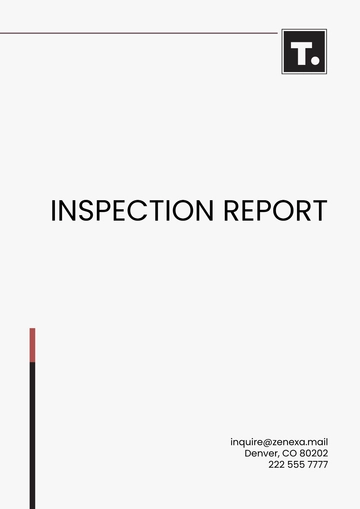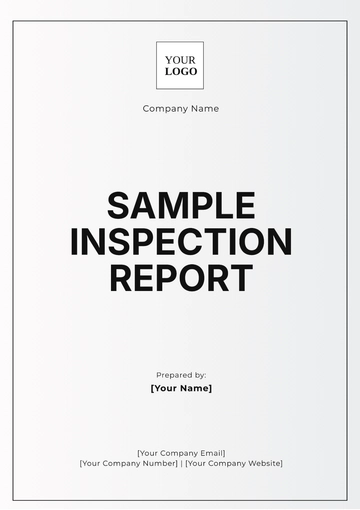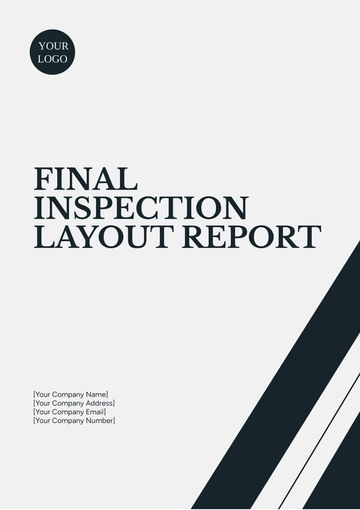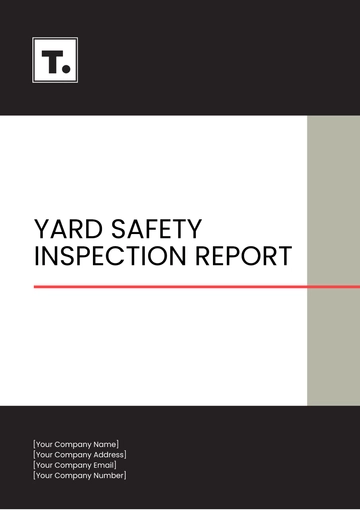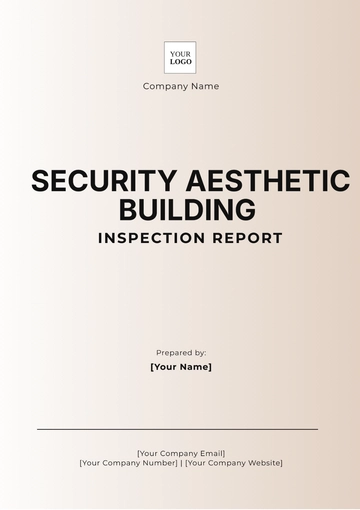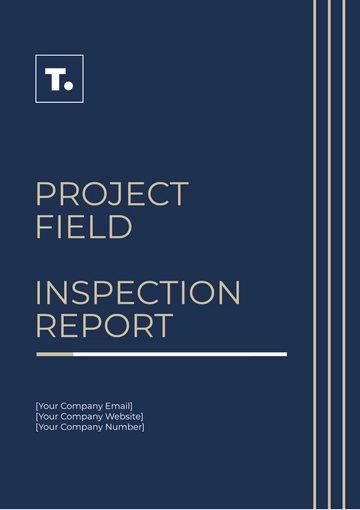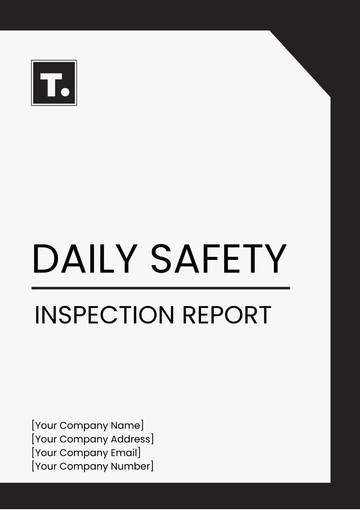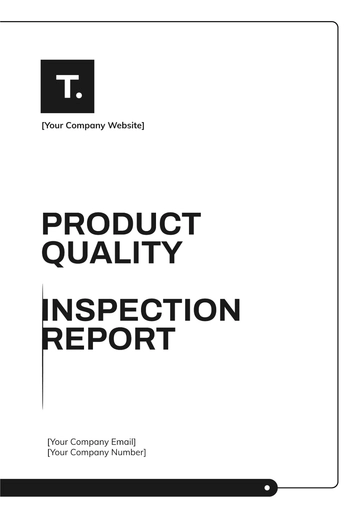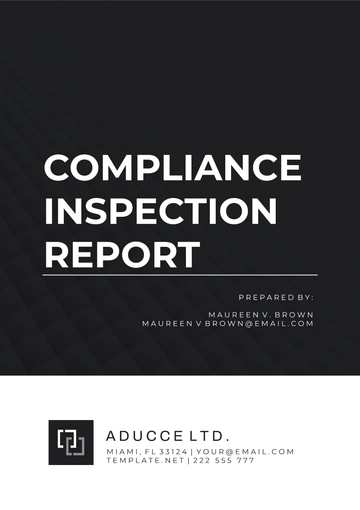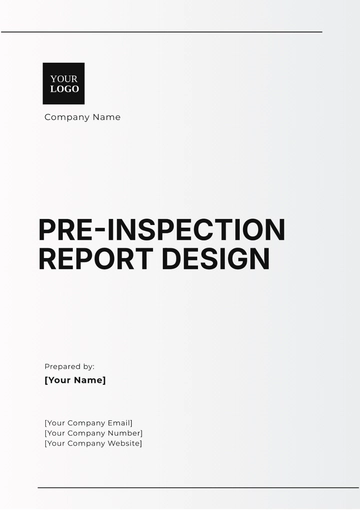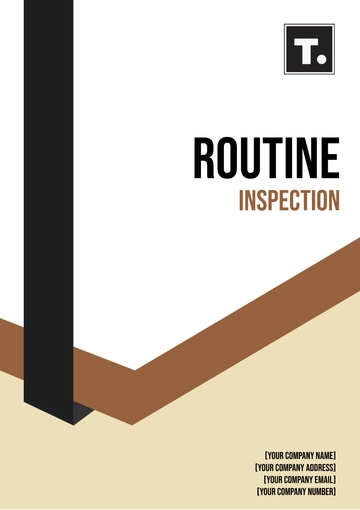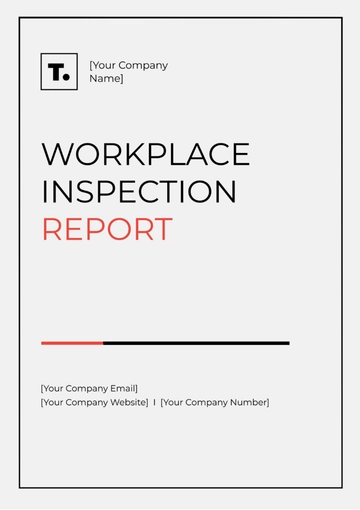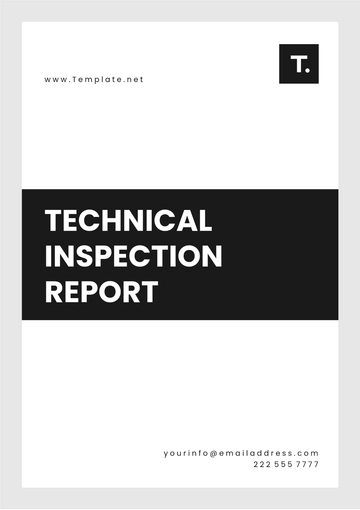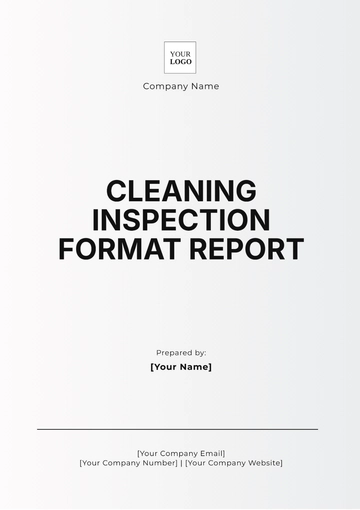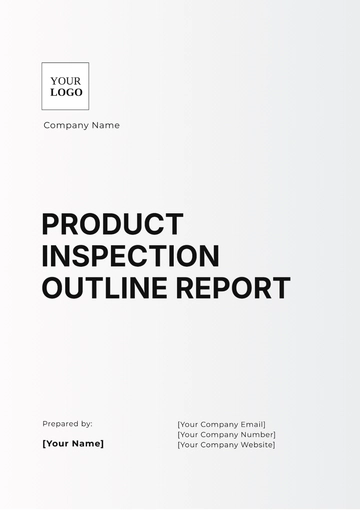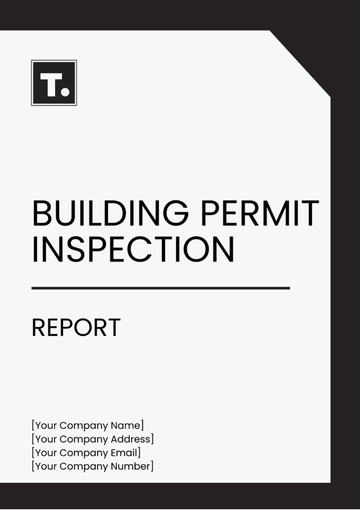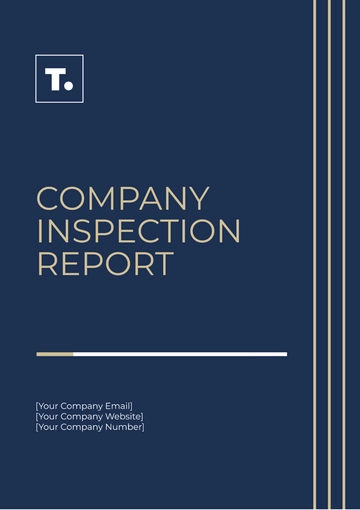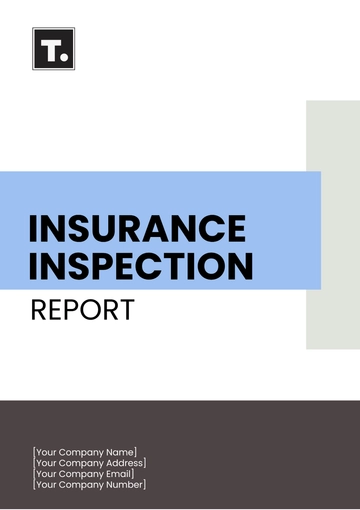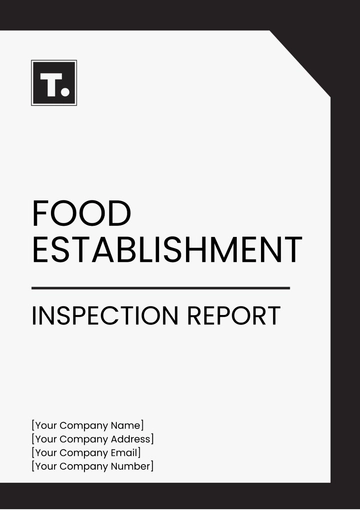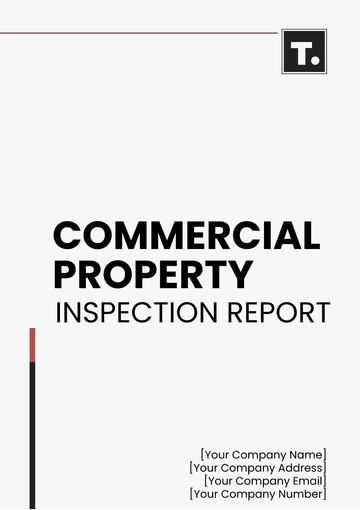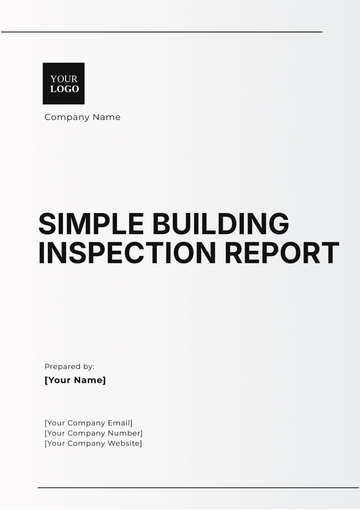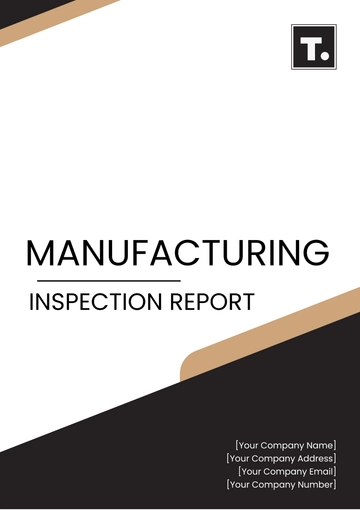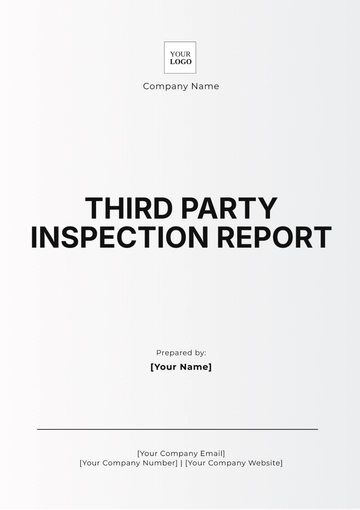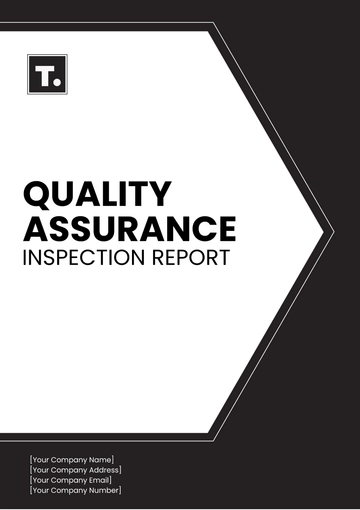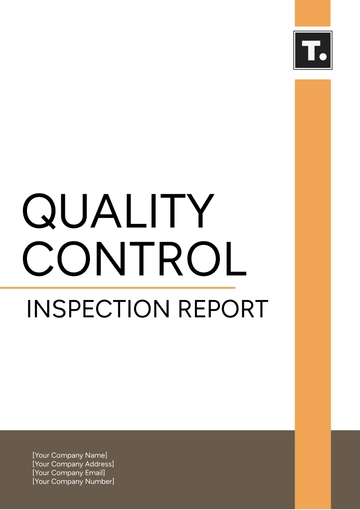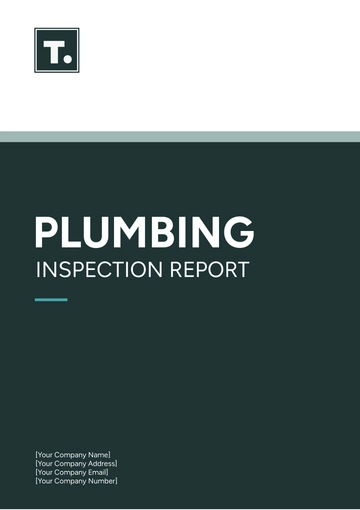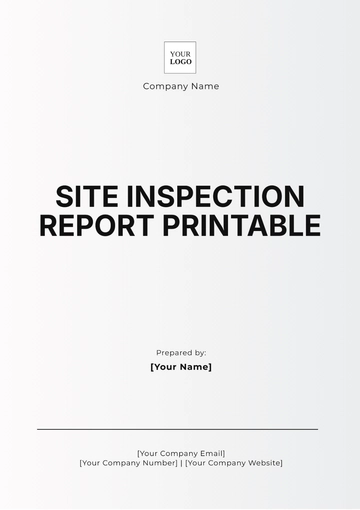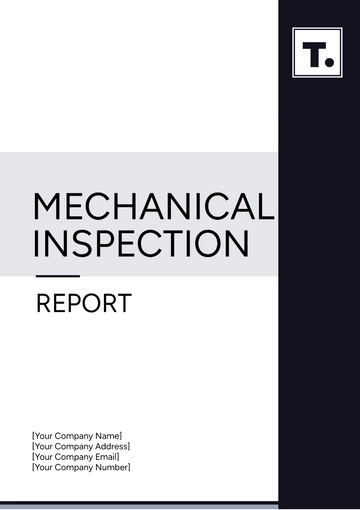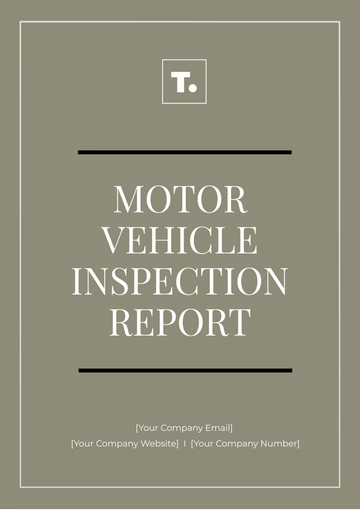Free Compliance Inspection Report
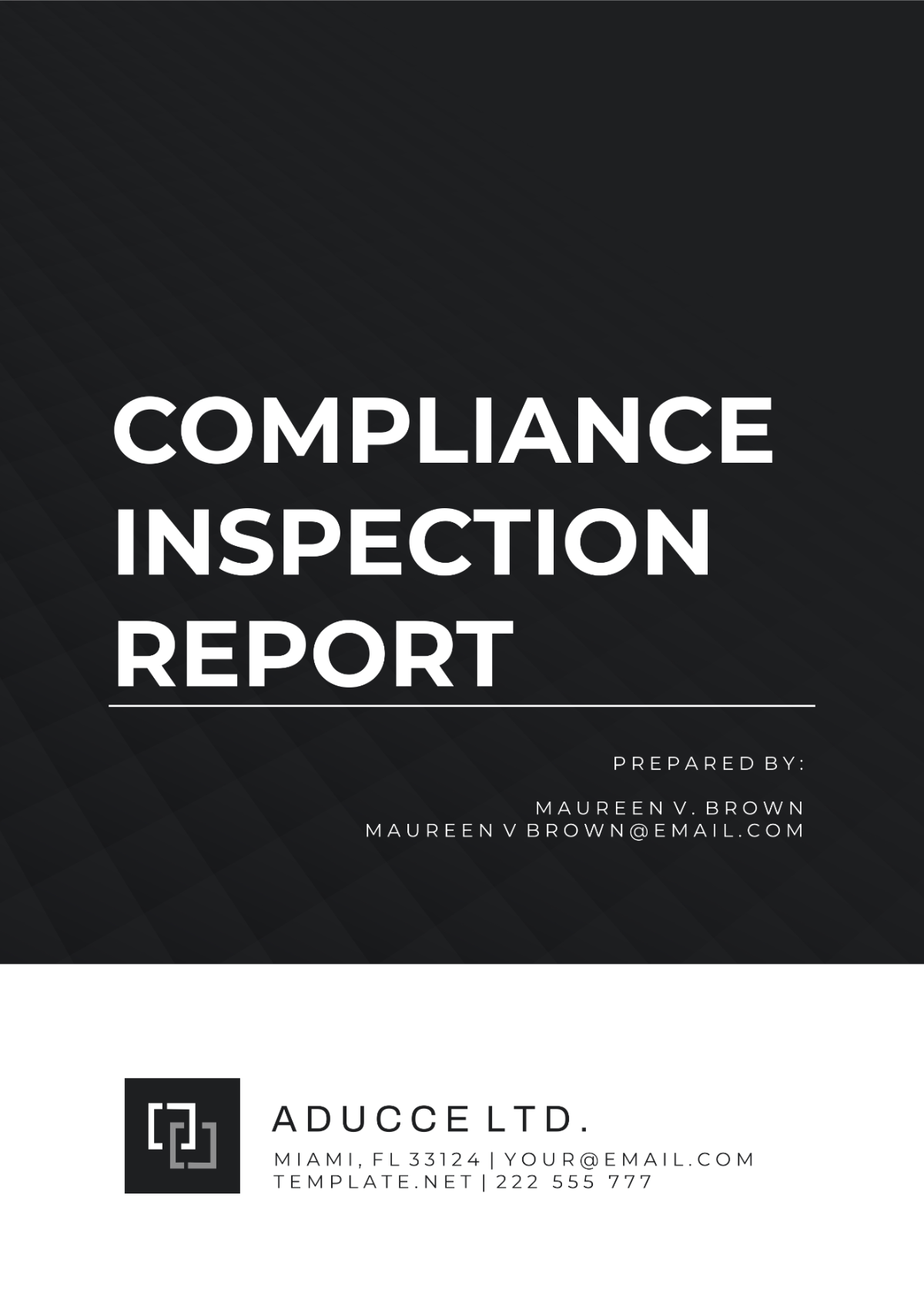
Company: [Your Company Name]
Address: [Your Company Address]
Inspection Performed By: [Your Name]
Department: Quality Assurance
I. Pre-Inspection Preparation
A. Review Documentation
Food Safety Plans
Sanitation Standard Operating Procedures (SSOPs)
Hazard Analysis and Critical Control Points (HACCP) Plan
B. Notify Staff
Schedule briefing sessions for staff regarding the upcoming inspection.
Ensure all relevant personnel are aware of their roles during the inspection process.
II. Hygiene Practices
A. Personnel Hygiene
Verify that all employees are adhering to proper handwashing procedures.
Ensure the use of appropriate protective clothing, including hairnets and gloves.
B. Facility Cleanliness
Inspect production areas, restrooms, and break areas for cleanliness and sanitation.
Check for the presence of pests and the effectiveness of pest control measures.
III. Sanitation Procedures
A. Cleaning Protocols
Assess the effectiveness of cleaning procedures for equipment, utensils, and surfaces.
Ensure the proper use of cleaning agents and sanitizers according to established protocols.
B. Equipment Maintenance
Verify that equipment is properly maintained and in good working condition.
Check for the presence of rust, corrosion, or other signs of deterioration.
IV. Food Safety Regulations Compliance
A. Food Labeling
Review product labels for compliance with labeling regulations, including ingredient lists and allergen information.
Ensure accurate labeling of expiration dates and storage instructions.
B. Temperature Control
Monitor temperature controls throughout the facility, including refrigeration and cooking processes.
Check temperature logs for accuracy and completeness.
V. Employee Training and Awareness
A. Food Safety Training
Confirm that all employees have received appropriate training in food safety principles.
Provide refresher training as necessary to reinforce proper practices.
B. Allergen Awareness
Ensure that staff are knowledgeable about common food allergens and cross-contamination prevention measures.
Conduct periodic quizzes or training sessions to assess and reinforce allergen awareness.
VI. Recordkeeping and Documentation
A. Inspection Records
Maintain thorough documentation of inspection findings, corrective actions, and follow-up procedures.
Ensure that records are organized and easily accessible for future reference.
B. Training Documentation
Keep records of employee training sessions, including attendance and topics covered.
Document any corrective actions taken in response to training deficiencies.
VII. Corrective Actions and Follow-Up
A. Address Non-Compliance
Identify areas of non-compliance and develop corrective action plans.
Implement corrective actions on time and document completion.
B. Follow-Up Inspections
Schedule follow-up inspections to verify the effectiveness of corrective actions.
Communicate inspection findings and recommendations to staff for ongoing improvement efforts.
VIII. Continuous Improvement
A. Review and Update Procedures
Regularly review and update food safety procedures in response to regulatory changes or emerging risks.
Solicit feedback from staff to identify areas for improvement.
B. Training and Education
Provide ongoing training and education opportunities to enhance staff knowledge and skills.
Encourage employee participation in industry conferences, workshops, and certification programs.
VIII. SIGNATURE
Ensure that [Your Company Name]'s Compliance Checklist is regularly reviewed and updated to reflect changes in laws, regulations, and business operations. Compliance is an ongoing process that requires continuous attention and improvement.
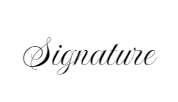
[Your Name]
Compliance Officer
Date: June 18, 2050
- 100% Customizable, free editor
- Access 1 Million+ Templates, photo’s & graphics
- Download or share as a template
- Click and replace photos, graphics, text, backgrounds
- Resize, crop, AI write & more
- Access advanced editor
Enhance and Discover the Compliance Inspection Report Template from Template.net! Crafted for efficiency, it's editable and customizable to fit your specific needs. Seamlessly edit using our Ai Editor Tool, ensuring precision and professionalism in every detail. Simplify compliance reporting with this comprehensive, user-friendly template. Elevate your documentation game today.
You may also like
- Sales Report
- Daily Report
- Project Report
- Business Report
- Weekly Report
- Incident Report
- Annual Report
- Report Layout
- Report Design
- Progress Report
- Marketing Report
- Company Report
- Monthly Report
- Audit Report
- Status Report
- School Report
- Reports Hr
- Management Report
- Project Status Report
- Handover Report
- Health And Safety Report
- Restaurant Report
- Construction Report
- Research Report
- Evaluation Report
- Investigation Report
- Employee Report
- Advertising Report
- Weekly Status Report
- Project Management Report
- Finance Report
- Service Report
- Technical Report
- Meeting Report
- Quarterly Report
- Inspection Report
- Medical Report
- Test Report
- Summary Report
- Inventory Report
- Valuation Report
- Operations Report
- Payroll Report
- Training Report
- Job Report
- Case Report
- Performance Report
- Board Report
- Internal Audit Report
- Student Report
- Monthly Management Report
- Small Business Report
- Accident Report
- Call Center Report
- Activity Report
- IT and Software Report
- Internship Report
- Visit Report
- Product Report
- Book Report
- Property Report
- Recruitment Report
- University Report
- Event Report
- SEO Report
- Conference Report
- Narrative Report
- Nursing Home Report
- Preschool Report
- Call Report
- Customer Report
- Employee Incident Report
- Accomplishment Report
- Social Media Report
- Work From Home Report
- Security Report
- Damage Report
- Quality Report
- Internal Report
- Nurse Report
- Real Estate Report
- Hotel Report
- Equipment Report
- Credit Report
- Field Report
- Non Profit Report
- Maintenance Report
- News Report
- Survey Report
- Executive Report
- Law Firm Report
- Advertising Agency Report
- Interior Design Report
- Travel Agency Report
- Stock Report
- Salon Report
- Bug Report
- Workplace Report
- Action Report
- Investor Report
- Cleaning Services Report
- Consulting Report
- Freelancer Report
- Site Visit Report
- Trip Report
- Classroom Observation Report
- Vehicle Report
- Final Report
- Software Report
